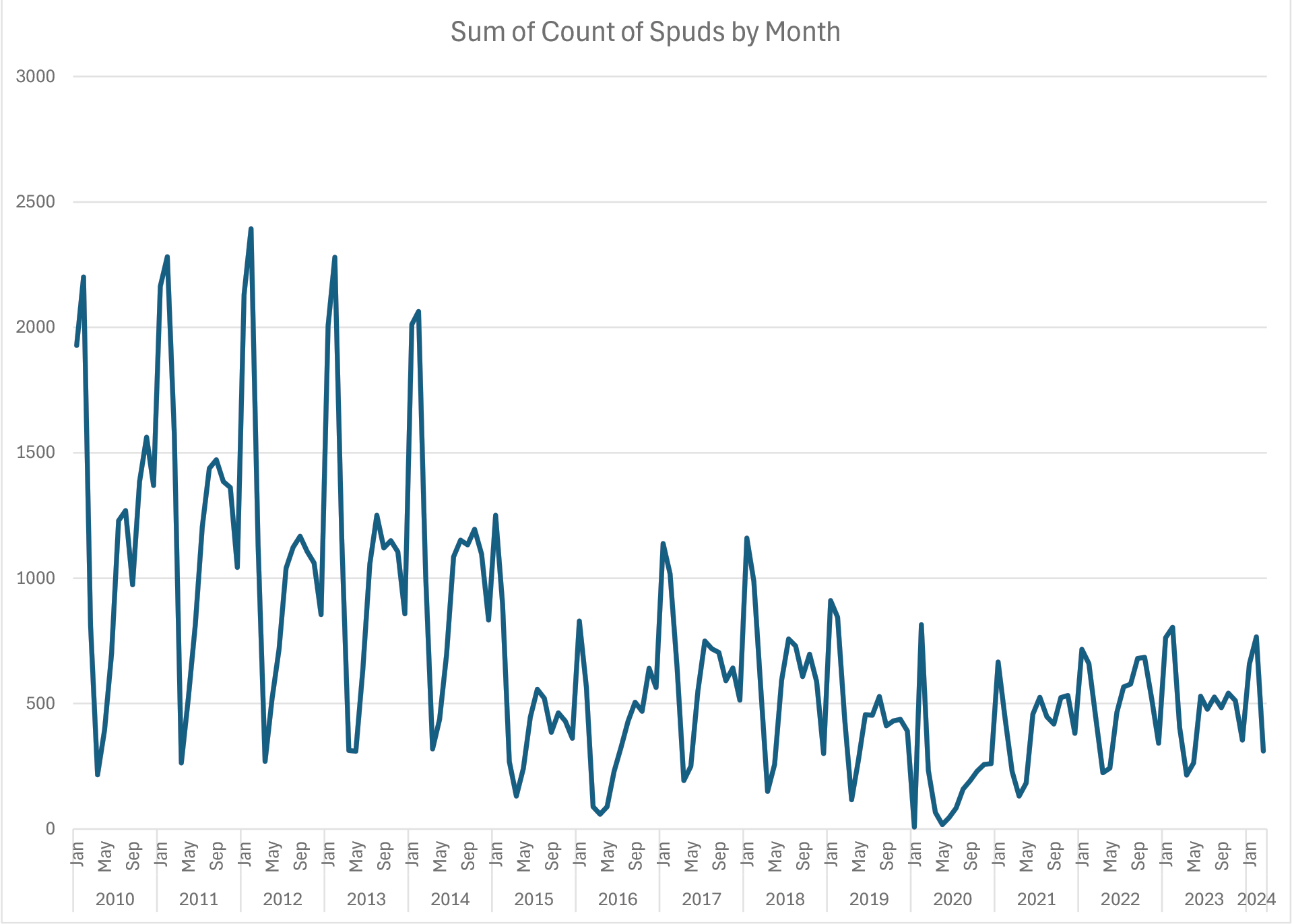WTTW: Breakup Blues – Challenges in Canada’s Oil Fields
May 14, 2024
Stay connected wherever you are. Subscribe to receive WTTW directly to your inbox and enrich your understanding with ease.
As winter wanes and temperatures rise, Western Canada’s oil fields undergo a unique phenomenon known as “spring breakup.” While this term may evoke images of thawing ice and budding flowers, in the oil industry, it signifies a period of challenges and adjustments. What does spring breakup entail, what impact does it have on operations and service companies, and how has technology changed how breakup is viewed in the past number of years?
What is Spring Breakup? Spring breakup refers to the transition period between winter and spring when frozen ground and ice begin to thaw. This transition period normally runs from early March to late May (the start and length is 100% weather dependent). In Canada’s oil fields, where much of the infrastructure is built on frozen terrain, this thawing process presents significant logistical hurdles. But technology has come a long way since the first wells were drilled in the early 1900s, and with the introduction of horizontal well drilling, and pad drilling the impact of spring breakup seems to be diminished.
Impacts of Spring Breakup on Oil Field Operations:
Restricted Access: One of the most immediate impacts of spring breakup is the restriction of access to oil field sites. Road bans on Government, Weyerhaeuser (forestry companies), and some privately owned roads are put in place to maintain public infrastructure integrity. Dirt roads on public or private land that were solid during the winter months turn into muddy quagmires, making them unsuitable / unstable for heavy vehicles.
Equipment Limitations: Heavy machinery used in drilling and extraction operations can sink into the softened ground, leading to delays and potential damage. Transporting goods becomes increasingly difficult whether those goods are equipment going into the site or production being moved out. Road bans lead to partial load capacities or even the inability to move in required equipment. This necessitates careful planning and sometimes halting operations until conditions improve.
Safety Concerns: Thawing ice and snow can create hazardous conditions for workers, increasing the risk of slips, falls, and accidents. Additionally, poor road conditions can make emergency response efforts challenging.
Mitigation Strategies:
Road Maintenance: In order to minimize the impact on soft access roads, oil companies often invest in road infrastructure support. These investments can be temporary support such as laying down rig mats or road decking. However, on access points which are used more often or give access to larger installations, this may involve graveling roads or reinforcing bridges. Technology has improved allowing the utilization of horizontal drilling and creation of pad sites which creates access to many wells from a single point.
Timing Operations: Planning drilling and extraction activities around spring breakup can help minimize disruptions. With improved access roads to pad sites as well as increased project management around drill locations, companies are better able to pre-plan what goods and equipment will be required for all the drills from a single location, thereby scheduling the delivery of the goods prior to breakup, allowing drilling work to continue at a constant pace during the breakup season. Drilling from pads makes it more efficient, requires less moving of equipment, and makes it easier to bring in supplies before the thaw begins.
Increased Monitoring: Employing advanced monitoring systems can help companies track ground conditions and predict potential hazards. This proactive approach allows for timely interventions to mitigate risks.
Environmental Considerations: Beyond its operational impacts, spring breakup also affects the environment. Increased vehicle traffic during breakup can disturb wildlife habitats, damage wetlands, and lead to soil erosion.
Looking at the number of wells spudded in 5 year increments since 2000 and comparing the number of vertical wells vs horizontal wells, we can see that horizontal drilling has almost taken over. This has lead to a decrease in the number of surface locations (decreasing not only the environmental impact, but also the cost of clean up at the end of the location’s life cycle).
When looking at when these wells were spud, there has historically been a large drop in spuds during the breakup time period but, as you can see, that impact is lessening over time.
Spring breakup poses unique challenges to Canada’s oil field operations, requiring careful planning and adaptation. By implementing proactive strategies such as road maintenance, timing operations effectively, and increasing monitoring efforts, companies can minimize disruptions and ensure the safety of workers and the environment. As technology gains ground and climate change continues to influence seasonal patterns, understanding and managing the impacts of spring breakup will remain a critical aspect of oil field management in Canada.
Each week, XI Technologies uncovers trends and insights using our enhanced data and software focused on the WCSB. If you’d like Word to the Wise delivered directly to your inbox, subscribe here. For more tips and to learn about how XI’s DrillingSuite can help with your high-level analysis visit XI’s website or contact XI for a demo.

